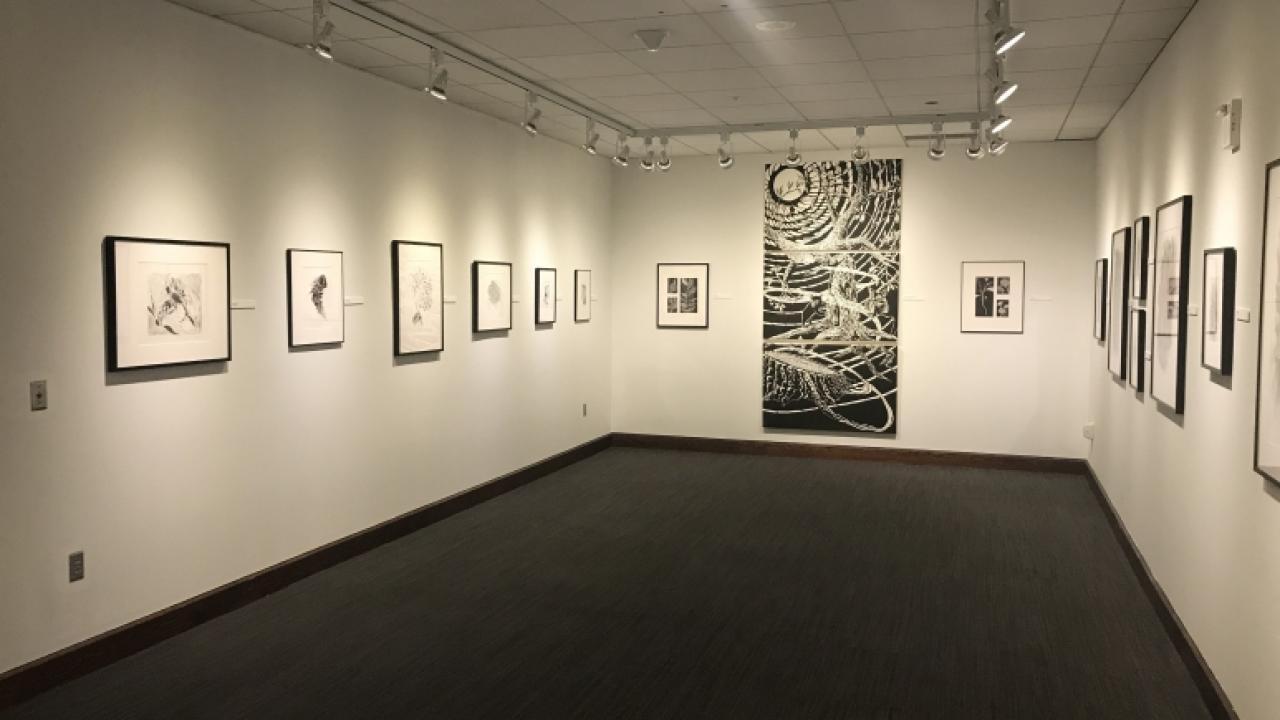So many things were or have been put on hold during the pandemic, including Dr. Lindsay Twa’s “stretch goal,” as she calls it, of having a solo exhibition at the Washington Pavilion Visual Arts Center. That is, until the Augustana professor of art got a phone call.
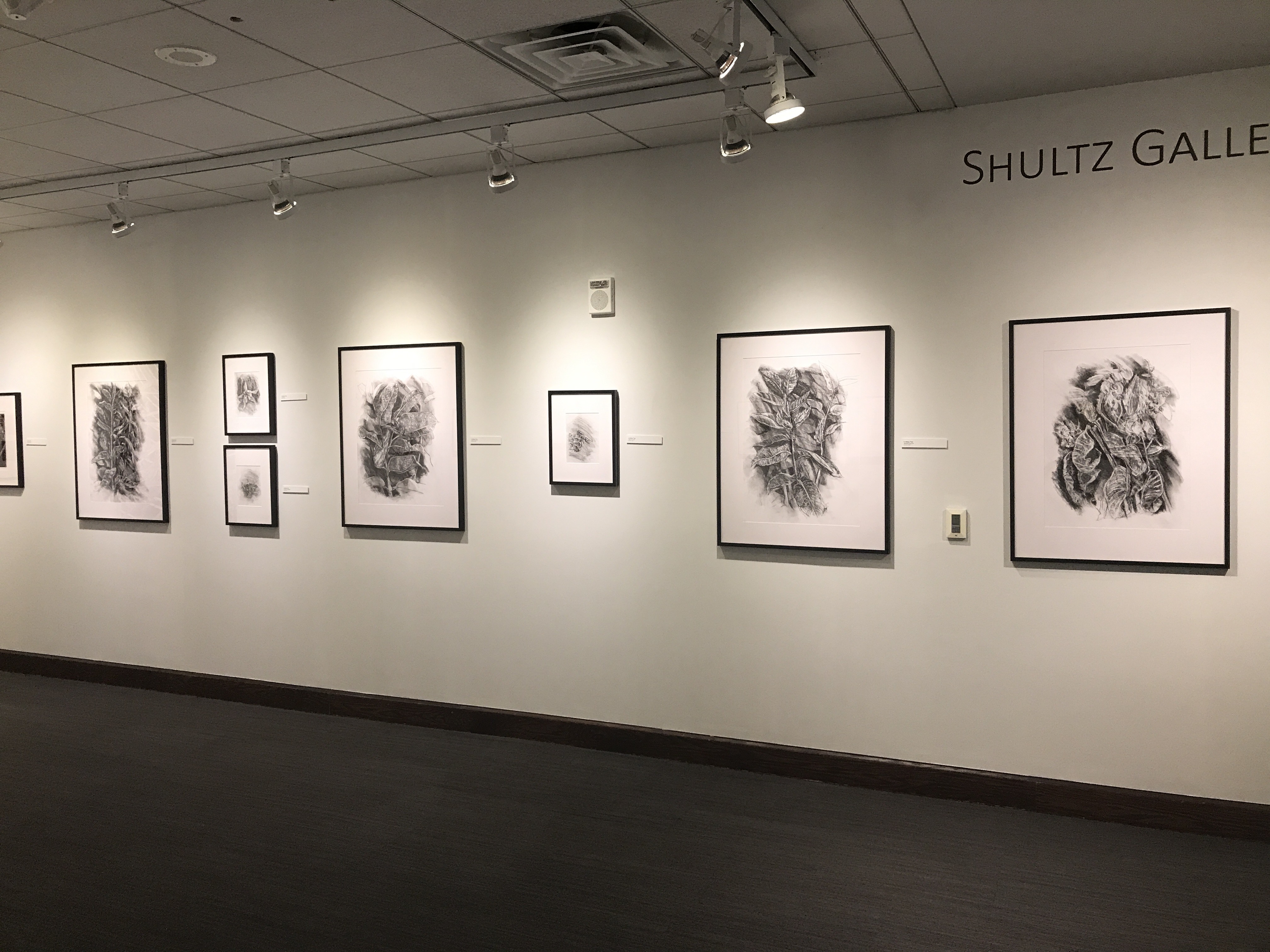
“Out of crisis, there’s opportunity. The (Washington) Pavilion contacted me in the fall to suggest ‘Hey, you know that exhibition you were thinking about pitching, why don’t we do it now? And, how does January work?’ As Twa tells her students, there’s nothing like a deadline so, “I said, ‘Yes,’ hung up the phone, and then went, ‘Holy crap. How am I going to pull this off?’”
Her original exhibition proposal was for a series of fine art lithographs, which must be printed collaboratively in Augustana’s studio. COVID-19 regulations meant that this was not possible, and she had to work fast to propose an alternative exhibition. Fortunately, the director of the Eide/Dalrymple Gallery and humanities division chair had been drawing over the summer after challenging other faculty and students to do the same.
“I started making more and more drawings of the natural environment with the idea they could just exist as drawings,” said Twa. “Basically, I made images of the entire lifecycle, seedlings that started in my garden through maturity, the animals and critters and insects that those images helped to sustain, including a grove of milkweed and then through the end of the lifecycle as they were dying away into the fall.”
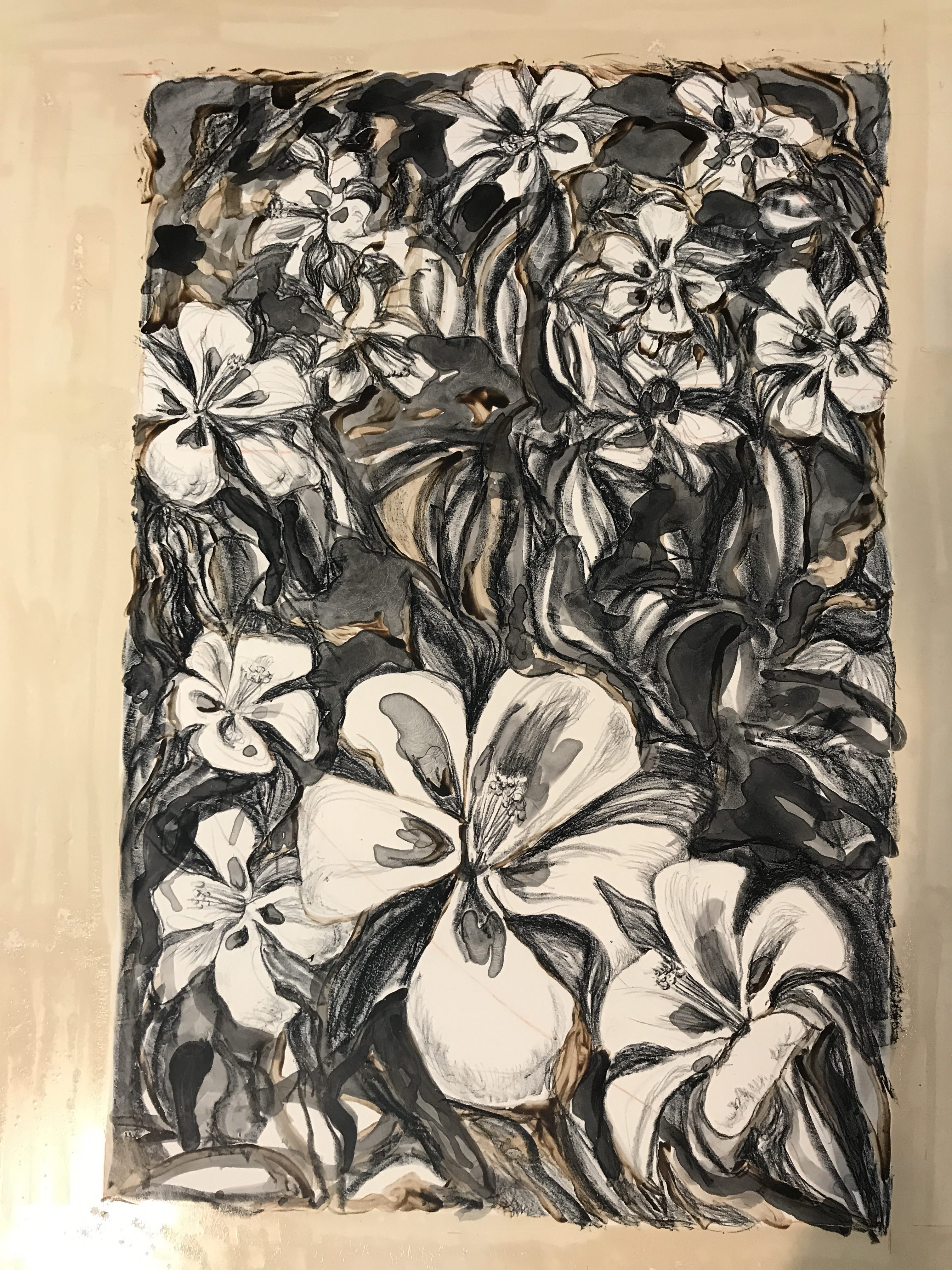
This summer of drawing became Twa’s exhibition called “A Garden Conversation,” at the Washington Pavilion, which features charcoal drawings, in addition to relief prints and lithographs. The printmaking process of lithography is nothing short of incredible. It’s not something every artist has the ability or opportunity to do, and it was done right here at Augustana, thanks to other artists who came before her.
Twa explained, “Eighteenth-century artists were desperate to find mechanical means to make multiples. But they also wanted images to look like paintings.”
The artist begins by drawing on a polished Bavarian limestone with a greasy oil-based crayon, chemical pigment or wash. When the stone is processed and printed from, it retains the qualities of a drawing or painting. Even with the invention of photography, lithography was still the primary means of reproducing images for books, newspapers, magazines and advertisements well into the mid-twentieth century. While drawing on and printing from stones is no longer a part of the print media world, it still survives as a fine art practice.
Once the image is on the stone, Twa says this is “where art and science meet.”
“I have a sketchbook that I use, but I also have a laboratory notebook and printed instructions. I think this bundle of instructions was first assembled by Carl Grupp, who founded the printmaking department at Augustana. These instructions passed to Scott Parsons, from whom I learned lithography. I carry this bundle of papers with me everytime that I process and get ready to print a stone,” said Twa. “It is, essentially, my security blanket!”
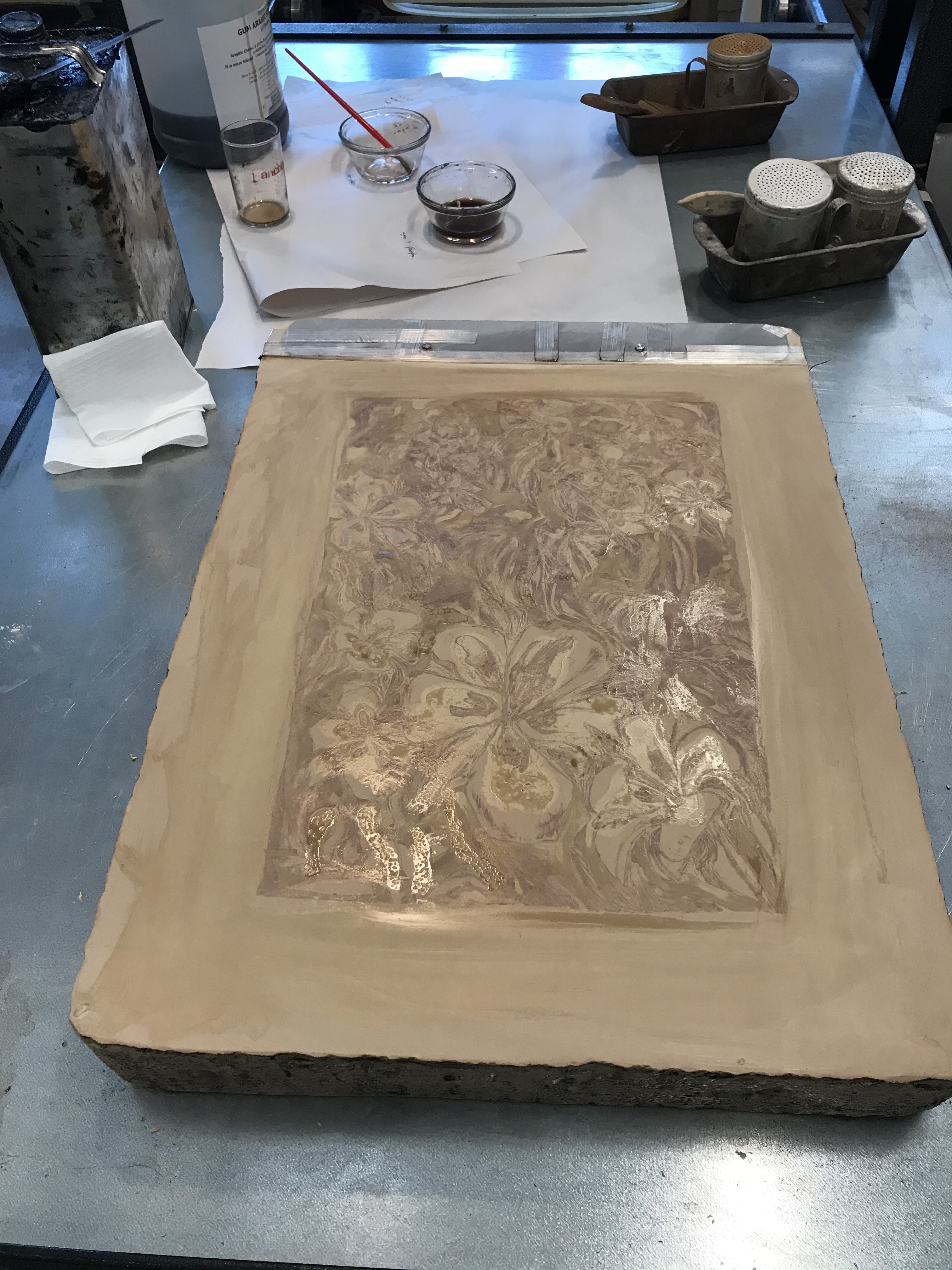
Passed down from 18th-century lithographers, various mixes of nitric acid are then applied to the stone in a multi-day process. After applying the nitric acid to the stone, you wash it with a volatile solvent called lithotine, washing away your image as well.
“Once it’s fully washed out, your image, that you’ve maybe taken days, weeks, months to draw and paint, is gone. Then comes the magical moment of putting water on the stone and then you roll over the top of that damp surface with an oil based ink, and anywhere you’ve processed the stone, if it works, the ink will start adhering to and will hopefully then look like this,” said Twa showing us an image.
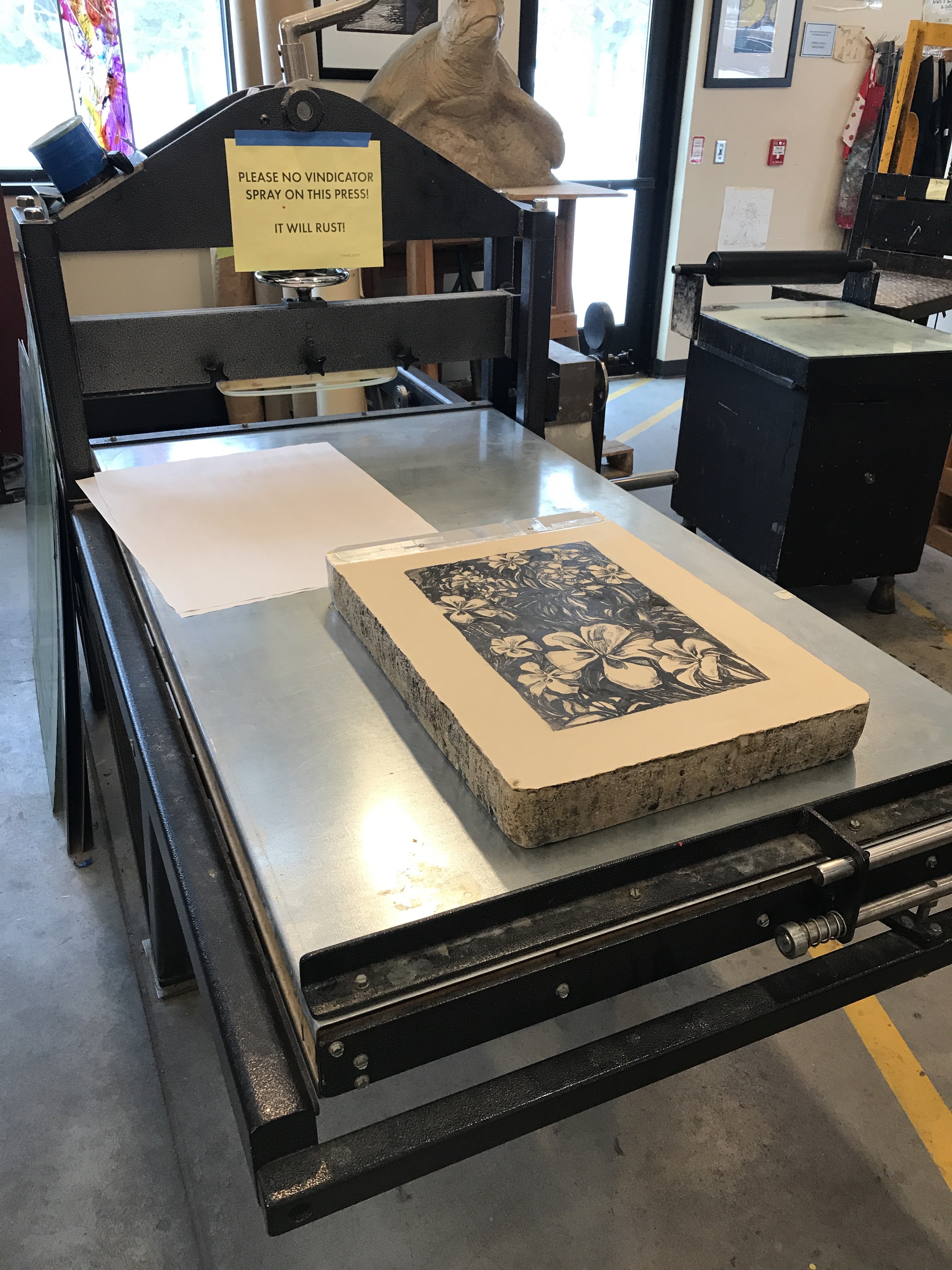
“Why would anyone do this? For me, it’s the blend of liberal arts, of art and science. It’s also a collaborative process, it really takes two people to print a lithography stone.” Twa added, “This knowledge is contained within a community and they pass it down.”
Just like the knowledge of printmaking is passed down, so are the actual stones. Twa says recently, an Augustana alumnus drove a stone to campus in his truck from Alabama to present it to the university at homecoming.
Twa said, “When I arrived on campus, my jaw just dropped the first time I was introduced to the printmaking studio. My undergraduate institution had two printmaking stones of relatively modest size, maybe 18 or 20 inches, and you weren’t even allowed to touch them or look at them until you had gone on to the advanced printmaking classes.”
Twa says Augustana has nearly 50 stones, ranging in size from 10-12 inches to three to four feet. The large ones weigh several hundred pounds and are moved around the studio by a manual forklift. And even the university’s beginning printmakers are allowed to use them.
“It’s in part because of the hard work and legacy of Carl Grupp, our recently deceased faculty emeritus, who really built the printmaking program, said Twa. “Grupp was incredibly smart at collecting these from old banks and printing businesses as they were just getting rid of these, and shifting to new printing technologies. Now these stones are really quite priceless, and they’re available here at Augustana, for the students, myself and other artists to use.”
Priceless, because the stone is a limited resource.
“They come from one geological stratosphere of the age of the dinosaurs and the quarries are running out,” said Twa. “You either have them or you don’t and they’re not replaceable. You care for them in community until they’re done. Each one has the potential for thousands of images, but there’s some that are getting thinner and thinner and thinner, and then they’ll be gone.
“Carl Grupp collected many stones for the department, and several of his personal stones came to us after he died. These latter ones still have his own images on them and he left no written plan for them. So now they can exist as art objects, because they have his images on them. But Carl was also a lifelong teacher, and he may have intended for the stones to be grained down and used by future students and artists. It’s really a difficult question and not one that we can answer readily.”
Regardless of the answer, Grupp can rest assured knowing that artists like Parsons and Twa are carrying on a legacy he built at Augustana to the Washington Pavilion and beyond.
Twa’s “A Garden Conversation” is on display in the Visual Arts Center’s Shultz Gallery at the Washington Pavilion through May 9.
